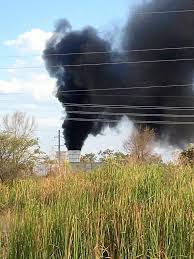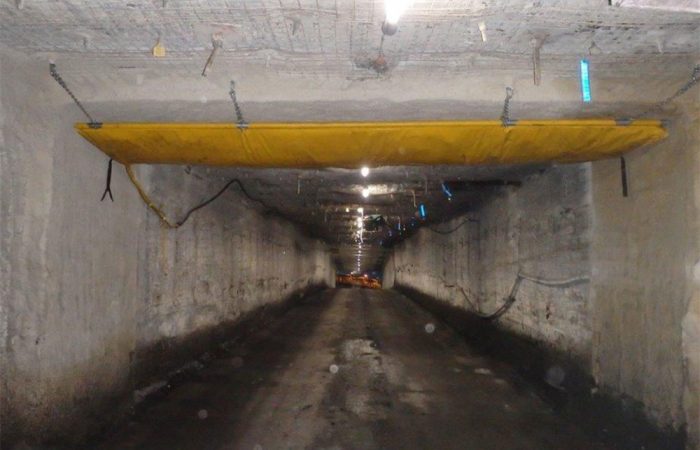
L 4 Compliance Meeting ERZC Management 6th February 2018. “ERZ Controllers Shift Managers and Control Room Operators who were known to have direct involvement in mismanagement of methane levels during January 2017 and involved other mine officials who were also at the Mine during that period.”
MRE – L4 Site North Goonyella – 06.02.2018.pdf
The meeting was conducted as a consequence of the investigation carried out by the Mines Inspectorate into the methane issues that occurred at the Mine during January 2017.
The meetings addressed those ERZ Controllers Shift Managers and Control Room Operators who were known to have direct involvement in mismanagement of methane levels during January 2017 and involved other mine officials who were also at the Mine during that period. It was decided that all needed to be made aware of the situation for future reference.
A second meeting will be held tomorrow at the Mine to ensure all ERZ Controllers and Shift Managers on the opposite crews receive the same information.
2.0 Explanation of the basis of the Accountability Meeting Inspector Marlborough
It was explained that Accountability Meetings are conducted under the Mines Inspectorate Compliance Policy. The investigation has shown that a number of individuals failed to meet their obligations under the CMSHA 1999.
When an investigation is undertaken by the Mines Inspectorate, an investigation report is produced by the lead investigator. If the report shows that there were failures in relation to obligations under the CMSHA then a Compliance Committee is formed, chaired by a Chief Inspector of another discipline(i.e. Explosives or Metals) and consisting of the Chief Inspector of Coal Mines, legal representatives and others. The committee then examines the investigation report and decides the level of action to be taken as a result. The level of Action Ranges from 1 to 5, with a level 5 action being a prosecution. A level 4 Accountability Meeting is held, usually in our Brisbane Office and is attended by the Chief Inspector, the Deputy Chief Inspector, The Regional Inspector and the Investigating Inspector. The Commissioner may also attend. A level 3 Accountability Meeting is held, usually in the Regional Office of the Mines Inspectorate and is attended by the Regional Inspector and the Investigating Inspector.
The Inspectorate’s Compliance Policy was changed in November 2017. The change is still going through the implementation phase, and as a result, the letters that were issued referred to the planned meetings as Compliance Meetings. These have changed in the new policy. They are now known as Accountability Meetings. The purpose of the meeting is to explain to individuals where the Mines Department’s investigation has shown that something they did, or something they did not do leaves them accountable for not fulfilling their obligations under the CMSHA. The purpose of the meeting is not to take the form of punitive action but to ensure that the lessons from the investigation are learned so that a reoccurrence is prevented.
The Accountability Meeting represents the final close out of the investigation process. An MRE will be sent to the Mine stating that the Accountability Meeting was held and will summarise the items discussed. The MRE for the Accountability Meetings will not on this occasion include people’s names.
We brought with us the full report and copies of the supporting evidence gathered. However, the meeting will not be a debate into the findings of the investigation. A copy of the investigation report can be obtained using the Freedom of Information process and applied for separately by any individual.
If a person has issues with the report findings then they are welcome to contact Inspector Gouldstone or Inspector Marlborough at a later date to discuss the matter.
Inspector Gouldstone will give a presentation of 15 slides regarding the investigation findings. No person will be named in that process and a further 10 slides and a short video will be shown to explain the context of why the Department consider the issue to be serious. Questions will be dealt with at the end of the presentations,
3.0 Summary of the presentations to persons attending the Level 3 Accountability Meeting
The atmospheric monitoring data for Longwall 9N return airway during the month of January 2017 was requested by the Department following an inspection at another underground coal mine in the Bowen Basin.
The Longwall operation at that mine was identified to have general body accumulations of methane in the Longwall return with the potential to present an unacceptable level of risk and was also in breach of regulatory requirements. ie
CMSH Regulation 366 Withdrawal of persons in case of danger
(1) For section 273 of the Act, a part of an underground mine required to be ventilated under section 344(1)(b) that has a general body concentration of methane of at least 2.5% is taken to be dangerous.
CMSH Act section 273 Withdrawal of persons in case of danger
(1) If a coal mine is dangerous, all persons exposed to the danger must withdraw to a place of safety.
The analysis of the data provided by NGC came from the following sources –
- Real time and tube bundle and gas monitoring data
- ERZ Controllers Statutory and Production reports
- Control room environmental alarm logs
- Monthly Ventilation reports
- TARP’s 024 and 025
- Risk assessments
The significant points that were apparent and brought to the attention of the North Goonyella representatives were as follows:
- Numerous occasions where the Tailgate general body methane concentrations exceeded 2.5%. This was followed by failures to conduct withdrawals to a place of safety and continuing with production operations whist methane was in excess of 2.5%.
- Inconsistent alarm responses with the application of TARP’s 024 and 025.
- Inadequate investigations into triggered alarms from tube bundle monitoring points.
- The continuation of production for 7.5 hours when the real time monitoring point for the Tailgate was in bypass.
- Risk assessment NC-MIN-RSK-LW029 which was a review of the TARP 024 to reduce the trigger levels. This was dated as being conducted on the 9th February which was 10 days after the letter from the Chief Inspector was issued in relation to the matter of 2.5% general body methane concentrations.
The lack of adequate hazard identification in this risk assessment was concerning given that the only ‘Unwanted Event/ Hazard Release” was the ” Escalation of methane levels in the Longwall return to >2.5% resulting in the loss of the TG as an escapeway” .
The three reported HPl’s from the 30th and 31st of January were also reported as sub section 7 of Schedule IC “an unplanned event that causes only 1 escapeway from the mine to be available for use”. The hazard of methane explosibility had not been considered.
- Inconsistent inspection and recording of environmental readings for the Tailgate. This also includes goaf stream sample results at the time of taking this sample.
- No evidence on the statutory officials reports of re-inspecting the work area after the withdrawal of coal mine workers due to the TARP level being triggered.
The undertaking of Ventilation Changes on night shifts when TARP triggered elevated methane events have occurred.
Senior Mine representatives have responded to the above matters which the
Inspectors acknowledged that the TARP 024 now had methane levels that were not in breach of legislative requirements.
However due to the aforementioned matters not demonstrating effective consistent management of these matters at all levels the following Directives were given verbally in March 2017 to the SSE by Inspector Dobson:
168 Directive to review safety and health management system and principal hazard management plans
To review the Principal Hazard Management Plan for Gas Management which shall include the review of risk assessments, Trigger Action Response Plans, and to implement effective adequate controls for the management of flammable gas. This includes demonstrating the training and competence of all persons with obligations for this hazard.
166 Directive to reduce risk
To review the application of adequate controls to ensure that any general body concentrations of flammable gas that exist in any workings do not eventuate in concentrations that present an unacceptable level of risk. This requires the implementation of controls that are in accordance with the hierarchy of controls with respect to the magnitude of this hazard.
The due date for both Directives was 16th March 2017 and both have now been satisfied.
The Inspectors expressed the concern that the documentary evidence showed that there was a risk that the presence of elevated methane levels had become G normalised’ and the Mine needed to deal with the issue as a matter of urgency.
The investigation continued and a report was produced which resulted in a level 4 Compliance meeting documented in an MRE dated 20 November 2017.
This Level 3 Accountability meeting and the second meeting to be held tomorrow completes the Compliance/Accountability process.


